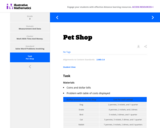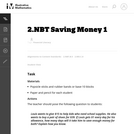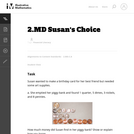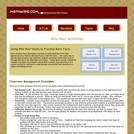Lesson Plan – Math Lesson Plan: Learning to Count Change 2nd grade Activity: Learning to count change: penny, nickel, dime, quarter Grade: 2nd grade Concepts: Teach the students how to recognize change and count using pennies, nickels, dimes, and quarters up to a dollar. National Standards: Math- MA 2.2.5.a. Count mixed coins to $1.00 Objectives: the objective is that the students learn how to recognize and distinguish between different American currency using change: pennies, nickels, dimes, and quarters. Criteria: The student must be able to provide evidence and knowledge of the behavior and the student is expected to learn how to count change (penny, nickel, dime, quarter) up to a dollar will a high accuracy. Multiple Intelligences: The lesson accounts for auditory, visual, and kinetic learners by having the students participate in many different strategic learning activities. Essential Question(s):1. How can learning to count change help you inside the classroom as well as outside the classroom?2. Why is learning to count change important?3. How can we use counting change in our everyday lives? Ask for examples.4. Is learning to count money and change useful to you? Conditions:The behavior should be performed within as open class discussion before moving into individual work. Students should be relaxed, engaged, and motivated to learn. Instructional Objectives: The students should be active participants while performing the behavior. Motivation: Making math fun! Incorporating something special to help them count change. Jelly beans, popcorn, (some kind of treat). Explaining how counting can be useful in everyday life. Examples: allowance, tooth fairy, birthdays). They each will earn a chocolate coin during their formative assessment. Connection to Learning:Prior knowledge would be skip-counting and counting to 100. Building on skip-counting by giving individual coins value and understanding those values and how they build to a dollar. Vocabulary:Change: a combination of coins such as pennies, nickels, dimes, and quarters.Penny: is worth 1 cent.Nickel: is worth 5 cents.Dime: is worth 10 cents.Quarter: is worth 25 cents. Materials:ComputerProjector or Smart boardThe Money Song, by Jack HartmannWorksheets: Let’s Make Change, Coins! Let’s Make ChangeCoins: pennies, nickels, dimes, quartersActivity: Race to a Dollar! And paperclipReward: Candy (of whatever reward you would like to use) Procedures:1. Introduce the subject and the objective to the class.2. Start off by asking a few questions a short pre-assessment about counting money. What previous knowledge does the class know?3. Explain the video we are going to watch that helps introduce the less. Explain how it teaches the students about money: pennies, nickels, dimes, and quarters. Let them know we are going to learn a song about money to help them remember the important facts.4. Watch the video once5. Teach the students about the song. Work on the song together as a class.6. Let the class know we are going to play a little game about making change after the video.7. Watch the video a second time and have the students sing along.8. Introduce the class activity: Race to a Dollar game9. Explain the rules to the game and how the winner gets a reward. (You can play the game anyway you would like).10. Once the game is over and the teacher feels comfortable that the class understood the lesson, pass out and explain the directions for the first or second worksheet.11. Explain the instruction and dismiss the class to work independently. This is a great time to walk about and formally assess the students independently.12. Hand out the second worksheet for homework.13. Explain that we will continue to build on this lesson in the days to follow.14. A summative assessment will be given at the end of the week. Assessment:Formative assessment - Worksheet: Coins! Let’s Make Change. The teacher will walk around and ask every student individually a questions about change in order to “buy” a chocolate wrapped quarter. Ex: In order to “buy” this candy from me how can you use different coins to make 30 cents. The student answers: 3 dimes. The teacher will help each student through the question and assess their current knowledge.Summative assessment - quiz on the lesson, how to count change focusing on (pennies, nickels, dimes, and quarters.) Accommodations/Accommodations for special needs child:Teacher will allow for one on one instruction time once the class has been dismissed to work independently. The class activity will be accomplished with a partner that and or the students will partner up with a student and they will become a team during this activity. The formative assessment will stay the same and the summative assessment will have each student's individual needs and or accommodations as stated in their IEP. Accommodations for ESL/ELL child: If necessary the teacher will have all directions and instructions written in the students dominate language as well as English to help them understand and accomplish the lesson. Resources:State Standards: https://www.perma-bound.com/state-standards.do?state=NE&subject=mathematics&gradeLevel=2https://www.perma-bound.com/state-standards.do?state=NE&subject=arts-education&gradeLevel=KYouTube: The Money Song: https://www.youtube.com/watch?v=pnXJGNo08v0Pinterest: https://www.pinterest.com/search/pins/?q=making%20change%20worksheets&rs=rs&eq=&etslf=3110&term_meta[]=making%7Crecentsearch%7Cundefined&term_meta[]=change%7Crecentsearch%7Cundefined&term_meta[]=worksheets%7Crecentsearch%7Cundefinedhttps://www.pinterest.com/pin/287597126182911466/ The Money Song | Penny, Nickel, Dime, QuarterBy, Jack Hartmann Penny, nickel, dime, quarter…Lets learnPenny, nickel, dime, quarter…Lets learn Money, money, money in my pocketMoney, money, I know how to count itMoney, money, money in my pocketMoney, money, I know how to count it What’s it worth? How much is a penny? 1 centHow much is a nickel? 5 centsHow much is a dime? 10 centsHow much is a quarter? 25 cents How much is a penny? 1 centHow much is a nickel? 5 centsHow much is a dime? 10 centsHow much is a quarter? 25 cents Money, money, money in my pocketMoney, money, I know how to count itMoney, money, money in my pocketMoney, money, I know how to count it What’s it worth? How much is a penny? 1 centHow much is a nickel? 5 centsHow much is a dime? 10 centsHow much is a quarter? 25 cents How much is a penny? 1 centHow much is a nickel? 5 centsHow much is a dime? 10 centsHow much is a quarter? 25 cents Money, money, money in my pocketMoney, money, I know how to count itMoney, money, money in my pocketMoney, money, I know how to count it Here is a penny and this is what it looks like…Penny, penny,A penny is worth? 1 centA penny is worth? 1 cent Here is a nickel and this is what it looks like…Nickel, nickelA nickel is worth? 5 centsA nickel is worth? 5 cents Here is a dime and this is what it looks like…Dime, dimeA dime is worth? 10 centsA dime is worth? 10 Cents Here is a quarter and this is what it looks like…Quarter, quarterA quarter is worth? 25 centsA quarter is worth? 25 cents Money, money, money in my pocketMoney, money, I know how to count itMoney, money, money in my pocketMoney, money, I know how to count it Money, money, money in my pocketMoney, money, I know how to count itMoney, money, money in my pocketMoney, money, I know how to count it Money, money, money in my pocketMoney, money, I know how to count itMoney, money, money in my pocketMoney, money, I know how to count it Money, money, money in my pocketMoney, money, I know how to count itMoney, money, money in my pocketMoney, money, I know how to count it
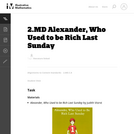
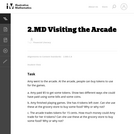
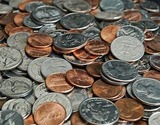
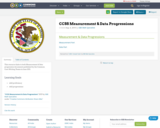
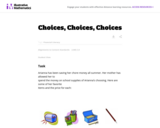
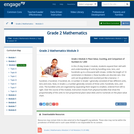
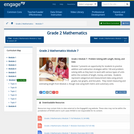
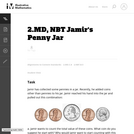


![OREGON MATH STANDARDS (2021): [2.GM]](https://img.oercommons.org/160x134/oercommons/media/courseware/lesson/image/13138_ODE_Math_Logo_2018-H_color_BvjqVNy.png)
